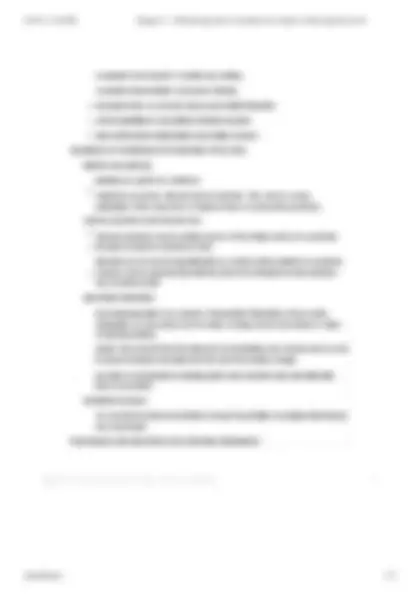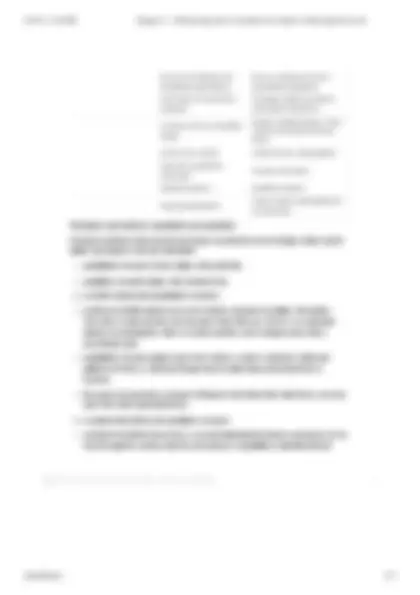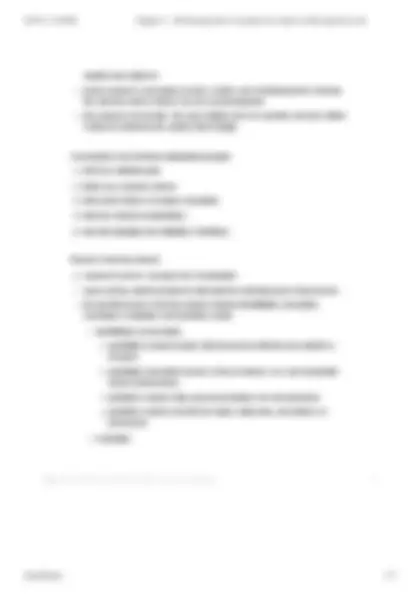





Study with the several resources on Docsity

Earn points by helping other students or get them with a premium plan


Prepare for your exams
Study with the several resources on Docsity

Earn points to download
Earn points by helping other students or get them with a premium plan
Community
Ask the community for help and clear up your study doubts
Discover the best universities in your country according to Docsity users
Free resources
Download our free guides on studying techniques, anxiety management strategies, and thesis advice from Docsity tutors
A comprehensive overview of the fundamentals of nursing research within an evidence-based practice environment. It explores the importance of research in guiding clinical practice, the roles of nurses in research, and the various sources of evidence used in nursing. The document also delves into the paradigms and methods of nursing research, including quantitative and qualitative approaches, and discusses the purpose of nursing research in achieving different levels of explanation.
Typology: Summaries
1 / 7

This page cannot be seen from the preview
Don't miss anything!




research- it is a systematic inquiry that uses structured methods to answer questions and solve problems Nursing research- systematic inquiry designed to develop TRUSTWORTHY EVIDENCE about issues of importance to NURSES AND CLIENTS Clinical nursing research- research designed to GUIDE NURSING PRACTICE Evidence based practice (EBP)- is the use of the best evidence in making patient care decisions. Importance of Research in evidence based nursing guides clinical practice plays a big role in making nursing and clinical decisions about patients Roles of nurses in research identify an idea for a clinical inquiry (research) assist in collecting research information offer advice to clients about participating in study search for research evidence Discuss implications of study in a journal club Future directions for nursing research continued use of EBP Translational research- research on how findings from studies can best be translated into practice stronger evidence through confirmatory strategies continued emphasis on systematic reviews
expanded local research in health care setting expanded dissemination of research findings increased focus on diversity issues and health disparities clinical significance and patient oriented research inter professional collaboration and health research SOURCES OF EVIDENCE FOR NURSING PRACTICE tradition and authority tradition are said to be ineffective Authority is a person with specialized expertise. They can be wrong , particularly id the experience is based primarily on personal experience. Clinical experience and trial and error clinical experience can be reliable source of knowledge unless its a personal because it could be coloured by bias. trial and error involves trying alternatives overtime until a solution to a problem is found. Can be practical but methods tend to be disorganized and solutions may be idiosyncratic assembled information benchmarking data is an example of assembled information, this provides information on such issues such as rates of using various procedures or rates of clinical problems quality improvement and risk data such as medication error reports can be used to assess practices and determine the need for practice change provides no mechanism to actually guide improvements, they just state that there is a problem disciplined research it is considered as the best method of acquiring reliable knowledge that humans have developed PARADIGMS AND METHODS FOR NURSING RESEARCH
focus on the objective and quantifiable (quantitative) focus on subjective and non quantifiable (qualitative) confirmation of researcher’s prediction emerging insights grounded in participants experiences it is fixed, with a pre specified design flexible, emergent design. There could be new themes coming along controls over context context-bound, contextualized measured, quantitative information narrative information statistical analysis qualitative analysis seeks generalizations seeks in-depth understanding of a phenomena Paradigms and methods: quantitative and qualitative Research methods- these are the techniques researchers use to design a study and to gather and analyze relevant information quantitative research closely aligns with positivism qualitative research aligns with constructivism
narrative and subjective tend to emphasize and capture dynamic, holistic, and individual aspects of human life within the context of those who are experiencing them they progress concurrently. They gain insights, form new question, and seek further evidence to determine the validity of their insight. Commonality of positivist and naturalistic paradigm
what aspect of nursing research is the responsibility of all practicing nurses? a) conducting studies on the characteristics of practicing nurses b) keeping up to date on research relevant to their practice c) conducting research on cost effecting nursing in hospital setting d) conducting research on client outcomes what type of evidence is considered most useful in informing nursing practice? a) tradition b) collective clinical experience c) research findings from high quality studies d) expert opinion wha is considered as the current priority area for nursing research?